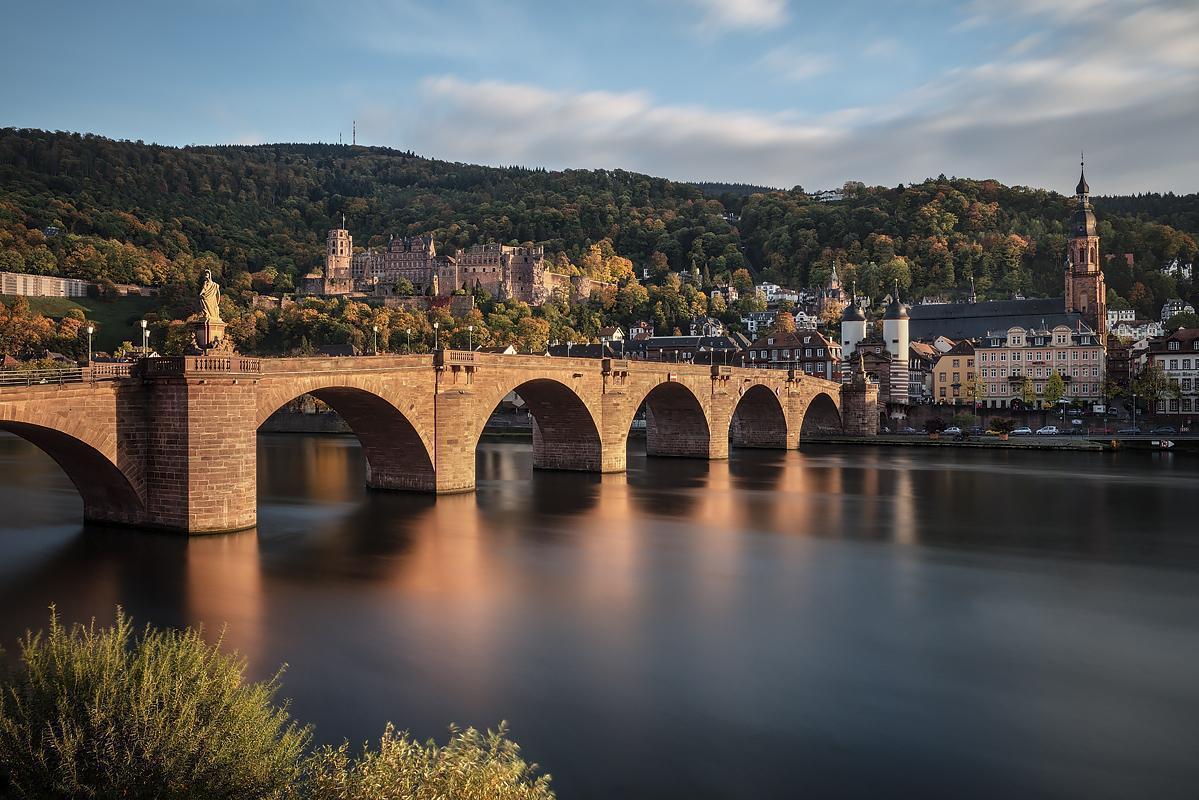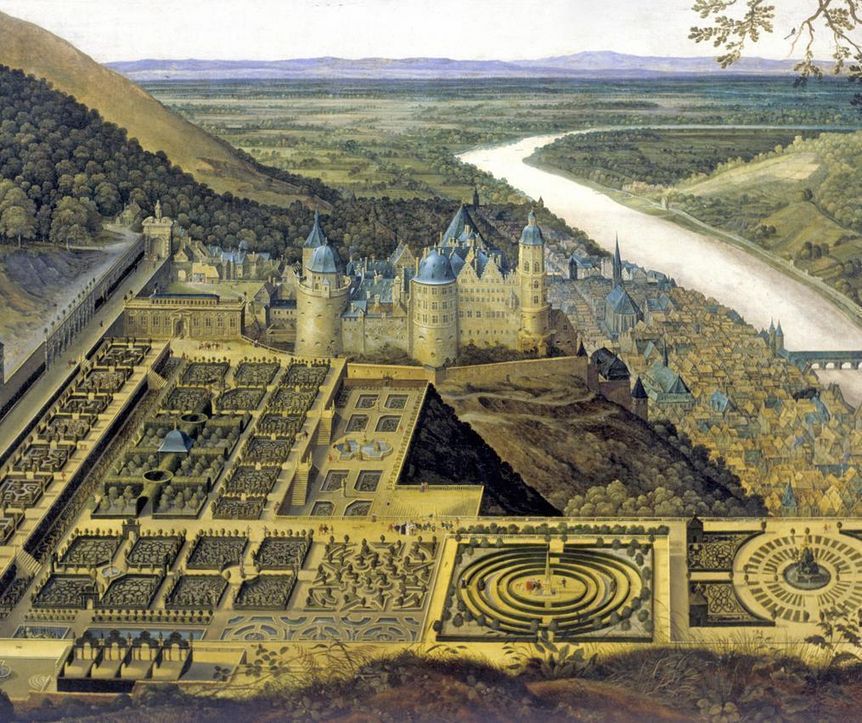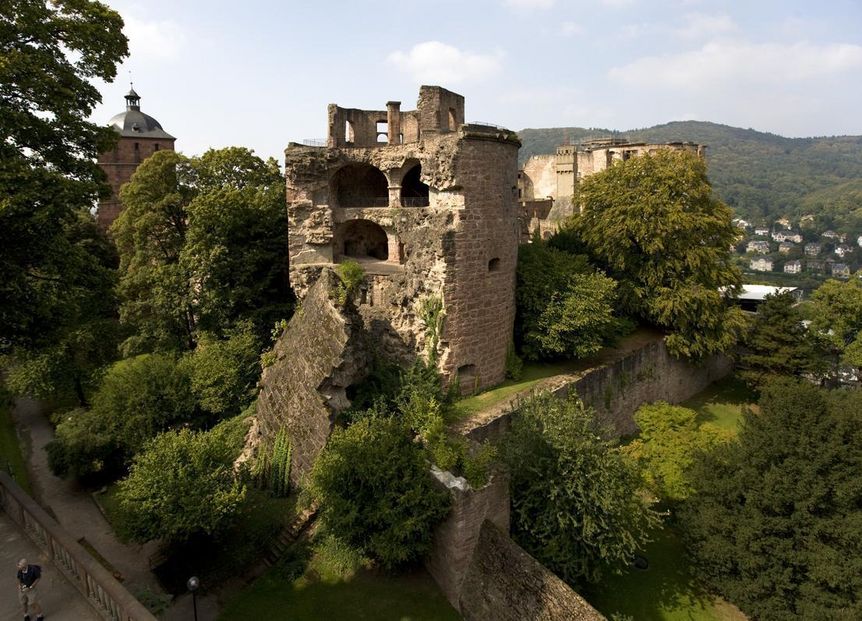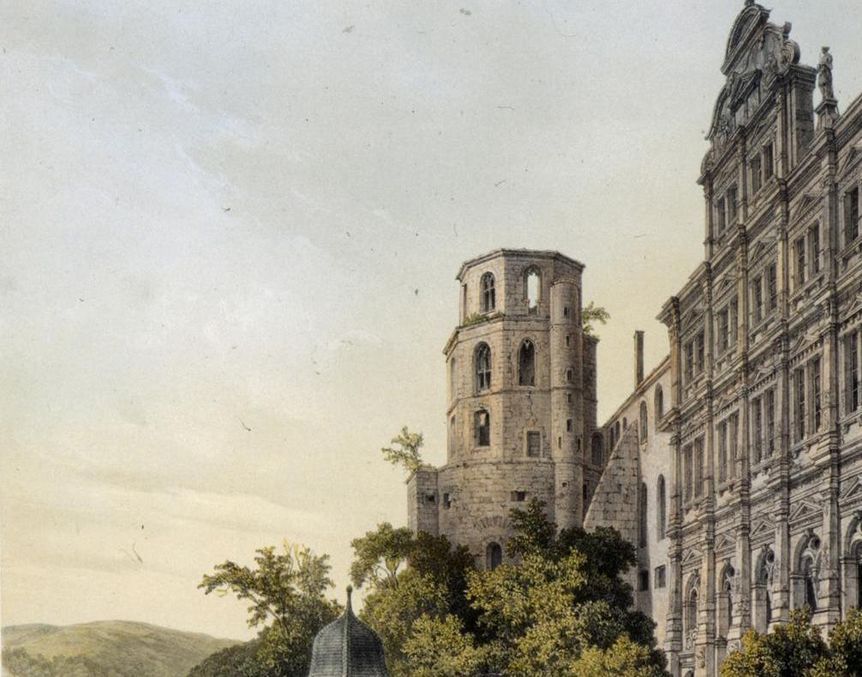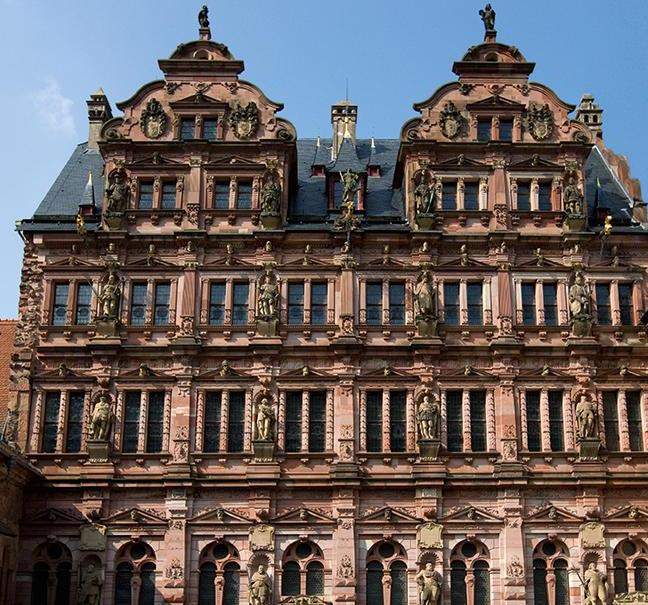A representative residence in the Electoral PalatinateThe castle andthe garden
Heidelberg Castle is probably the world's most famous ruins. This castle ruin of red sandstone from the Neckar valley sits high above the valley floor, on the steep northern slope of the Königstuhl hill, surrounded by green forest. Its silhouette dominates views of Heidelberg's historic district.



